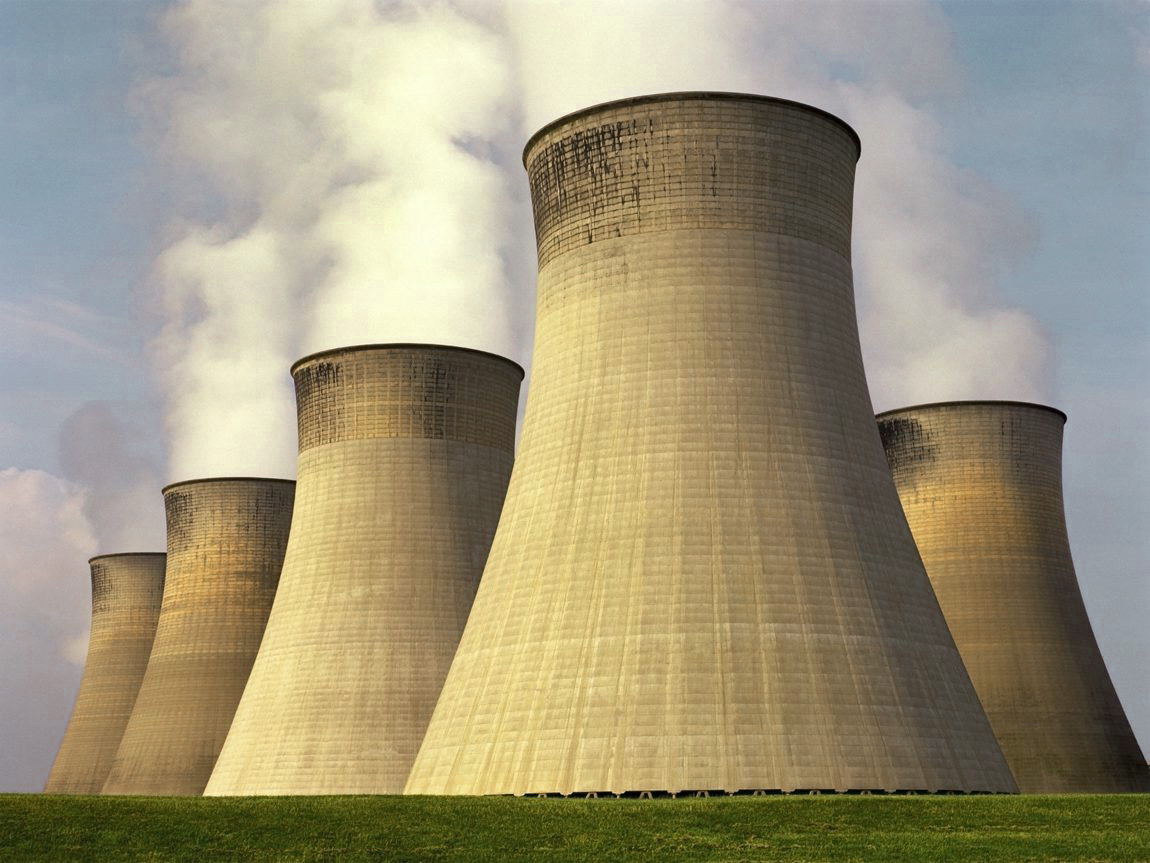Thanks to the cooling process of a water stream, a cooling tower takes in heat and puts the air into the atmosphere at a much cooler temperature. These towers were built to reject heat and are generally found in large chemical or nuclear power plants.
This article will cover the following topics associated with cooling towers:
How Does A Cooling Tower Work?
Cooling towers are generally found in large power plants and manufacturer buildings. The towers can vary in size, though. Cooling towers can also be spotted on mall, university and hospital rooftops. They are commonly found inside an HVAC system, used to cool the inside of a building. The cooling load is determined by the amount of space in the building and/or location which needs the heat extracted. Humidity of the air is also accounted for, as cooling towers in Florida will differ from a tower located in the dry heat of Arizona.
Evaporative cooling is a cycle that turns cooling evaporating water into air. This is a natural process, and one that can be seen utilized often in athletics. Next time you watch any sort of game, scan the sidelines for misters used to cool the players down after competing. Another example would be what happens the moment one steps out of the shower. The water on the skin quickly evaporates and pulls the heat from the body. We then feel the cooling sensation taking over.
Simply put, cooling towers are large boxes equipped to maximize the evaporation of water. Plastic sheets inside the tower create a large surface area, ready for evaporation. Just like nuclear power plants, these cooling towers rely on natural airflow throughout the tower. To help the process, some towers utilize a motor to generate quicker and more efficient airflow.
Cooling Tower Applications
These cooling towers are used to cool several products and machinery. Despite the various uses and machinery associated with this product, all cooling towers operate in the same way. Evaporative cooling is utilized in all circumstances.
Cooling towers are used for the following, plus many more applications:
- Food and beverage service
- Machine tools
- Chemicals
- Semi-conductors
Crossflow Cooling Towers
Because of its design, crossflow cooling towers force the hot process water to flow down the fill media. This is caused simply by the force of gravity. This process takes place at the same time as the air is being blown horizontally across the falling water, which cools it down significantly. The air flow and pattern of the water is where the crossflow model gets its name. Water will require only gravity for downward flow because there is no other present force going against it. Water will then be evenly distributed by the hot water basins located above the fills in the tower.
Counterflow Cooling Towers
Hot process water flows downward on the fill media, continuing its flow all the way onto the cold water basin. The air, though, enters in a lower section of the tower, compared to crossflow versions. From there, air will flow up, passing through the water flowing the fill. The end result here will be a cooling down phase. Pressurized pipes and nozzles are placed further apart than in crossflow towers. This is done to ensure nothing will obstruct airflow to the tower.
Forced Draft Cooling Towers
There are many benefits of using a forced draft cooling tower. And that is exactly why so many industrial plants opt for this model over the other options. Forced draft cooling towers are very powerful, yet economical at the same time. These models will remove low-potential heat that is generated in the production process. A counterflow of air combined with hot water results in a transfer of heat in the cooling fill. Paper and chemical industry plants often prefer to used forced draft cooling towers.
Factory Assembled Cooling Towers
Simple and easy transportation, installation and operation are some of the biggest reasons why plants love factory assembled towers. These versions continue to be extremely popular because they are some of the few towers that can be customized to your specific needs. Generally, these towers are used for HVAC and industrial applications where cooling efficiency is not a priority and space is limited.
Induced Draft Cooling Towers
This version features a fan at the top of tower, pulling the air upward. Fans in induced draft cooling towers then induce the hot, moist air out of the discharge. A powerful exit air velocity reduces any possible recirculation within the tower as the end result. That is the main goal for these models: to eliminate the possibility of any discharged air flowing back into the air intake area.
Cooling Tower Parts
Here’s a typical list of cooling tower parts used today:
- Fill Media
- Drift Eliminators
- Instrumentation System
- Nozzles
- Fans
- Fan Deck
- Fan Cylinder
- Fan Motor
- Drive Shafts
- Gear Box
- Inlet Louvers
- Water Level Controls
- Piping System
- Float & Distribution Valves
- Sealants & Coatings
- Basin Heaters
Read more about cooling tower parts and functions right here.
How Much Do Cooling Towers Cost?
Cooling towers generally cost around $125,000 to fully replace. A replacement will typically cost between $50,000 and $200,000 in the U.S. in 2021. A commercial cooling tower can last up 20 years. Typically, a complete cooling tower replacement will cost anywhere from $50,000 to $200,000.
Cooling Tower Installation, Replacement, & Refurbishment in Arizona & Nevada
Our team offers complete cooling tower refurbishment that will save your company tens of thousands of dollars over buying and installing new cooling towers. Cooling tower refurbishment and rebuilding adds about another 15 years of life to your equipment and helps you get your money’s worth out of your original investment in your cooling tower or property. We offer cooling tower installation, replacement, and refurbishment in Arizona and Nevada. We also sell other cooling tower parts and products.




